 Among archaeological artifacts, there are ancient pieces of clothing and footwear that date back 1,500-6,000 years. Sometimes, they surprise scientists beyond any expectations. For example, lingerie items that resemble modern counterparts, when it is believed that there were no such things as a bra or bikini knickers in Medieval age. Or garments consisting of 20 different fabrics from 700s. Or a 5,000-year-old linen shirt dug from Egyptian grave. Anyway, here you are the oldest clothes in the world.
Among archaeological artifacts, there are ancient pieces of clothing and footwear that date back 1,500-6,000 years. Sometimes, they surprise scientists beyond any expectations. For example, lingerie items that resemble modern counterparts, when it is believed that there were no such things as a bra or bikini knickers in Medieval age. Or garments consisting of 20 different fabrics from 700s. Or a 5,000-year-old linen shirt dug from Egyptian grave. Anyway, here you are the oldest clothes in the world.
Read also:
Medieval attire of the Bocksten Man, 14th-century Swedish mummy from a bog
Taizhou mummy dated Ming Dynasty shows us accurate 700-year-old Chinese clothing
Mongolian millennium-old mummy in Adidas-style shoes. Whaaat?!
How ancient Otzi the IceMan made his 5000 years old style backpack
Viking lost mitten from Lendbreen is one of a kind find. How was it made?
What are thought to be the world's oldest trousers have been discovered in one of the Yanghai tombs and China's Tarim Basin. The trousers are made of three bits of cloth: one for each leg and one for the crotch, stitched together. A woven decoration is also visible on the trousers. Thought to have been used for horse riding, the trousers, which could actually date up to 3,300 years old, are thought to be the oldest ever discovered.
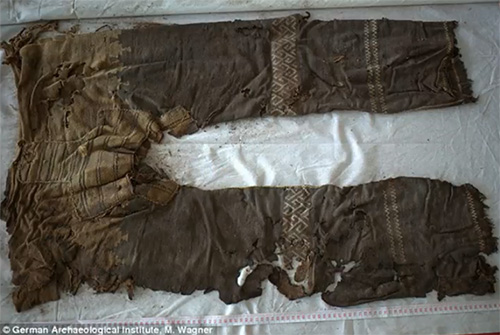
An Iron Age tunic was found under melting snow on Norwegian mountains. Other finds include Neolithic arrows and bow fragments, thought to be about 6,000 years old. The tunic was partly bleached from sun and wind exposure. It showed hard wear and tear and had been repaired with two patches. It was made between 230 and 390 A.D. and is one of only a handful of tunics that exist from this period. Two different fabrics were present and the fiber tips revealed that both were made of lamb's wool or wool from adult sheep.
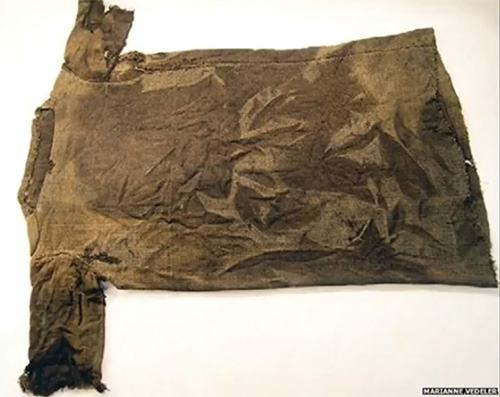
Researchers have confirmed that a 5,000-year-old linen shirt is the world's oldest known woven garment ever found. The dress was excavated at Tarkhan, an ancient Egyptian cemetery dating back to about 3,000 B.C. In 1913, the shirt, which became known as the Tarkhan dress, lay among a pile of textiles recovered from Egypt's First Dynasty cemetery located 50 kilometers south of Cairo. It was discovered only in 1977, among the filthy bundle of cloth pieces during conservation and cleaning work by the Victoria and Albert Museum in London. The cloth piece was carefully conserved, stitched onto Crepeline (a fine silk material used in textile conservation), and mounted so it could be seen the way it was worn in life.
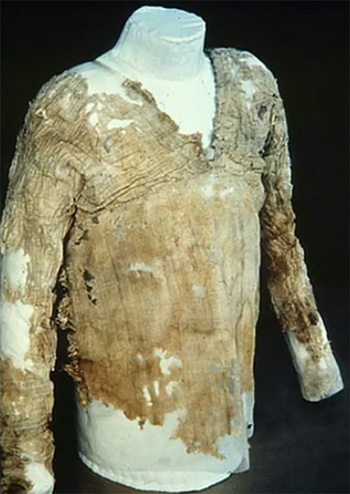
A perfectly preserved shoe, 1,000 years older than the Great Pyramid of Giza in Egypt and 400 years older than Stonehenge in the UK, has been found in a cave in Armenia. The 5,500-year-old shoe, the oldest leather shoe in the world, is made from a single piece of cowhide, cut into two layers and laced. It contained grass, although the archaeologists were uncertain as to whether this was to keep the foot warm or to maintain the shape of the shoe. “It is not known, whether the shoe belonged to a man or woman”, said the lead author of the research. “We thought initially that the shoe and other objects were about 600-700 years old because they were in such a good condition”, said Dr. Pinhasi. “It was only when the material was stated by the two radiocarbon laboratories – in Oxford (UK) and in California (U.S.) – that we realized that the shoe was older by a few hundred years than the shoes worn by Ötzi, the Iceman. Three samples were taken in order to determine the absolute age of the shoe and all three tests produced the same results. Interestingly enough, the shoe very much resembles a traditional Armenian shoe known as “charokh” – a type of moccasin still in popular use in Armenia.
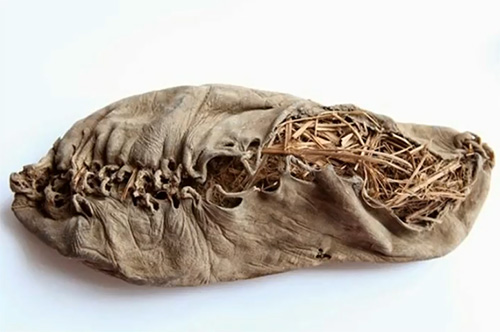
It is hardly racy by today's standards, but this skimpy lingerie has certainly shocked historians. The lace and linen undergarment state back to hundreds of years before women's underwear was thought to exist. They had lain hidden in a vault beneath the floorboards of an Austrian castle since the 15th century. Despite their state of decay, the knickers bear more than a passing resemblance to the string bikini briefs popular today, while the bra has the fitted cups and delicate straps of its modern-day counterparts. While it was known that medieval men wore undergarments like modern-day shorts, it was thought that women simply wore a smock or chemise. It was thought that knickers didn't make an appearance until the late 18th century. Bras were thought to be an even more modern invention, not appearing until around 100 years ago. The undergarments were among almost 3,000 fragments of clothing and other detritus found in Lengberg Castle in East Tyrol during recent renovations. It is thought that they were buried when the building was extended in 1480 and that exceptionally dry conditions stopped the fragile garments from disintegrating over the centuries. Beatrix Nutz of Innsbruck University, who made the finds, initially faced skepticism but radiocarbon dating tests confirmed her suspicions. The find included four bras and two pairs of pants, two of the bras resemble modern counterparts but the others are described rather bluntly as “shirts with bags”.
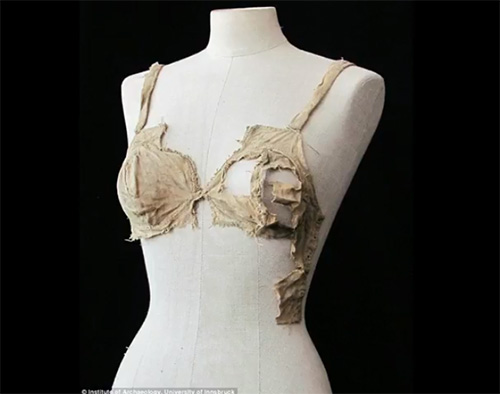
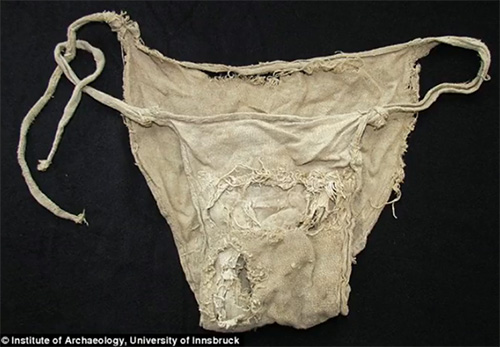
Bernuthsfeld man was discovered on May 24th, 1907, when peat workers unearthed two skeletons and clothing. His heavily worn tunic was patched out of 45 single pieces of cloth out of 20 different fabrics in 9 different weaving patterns. He was thought to come from Northwest Germany around year 680 to 775.
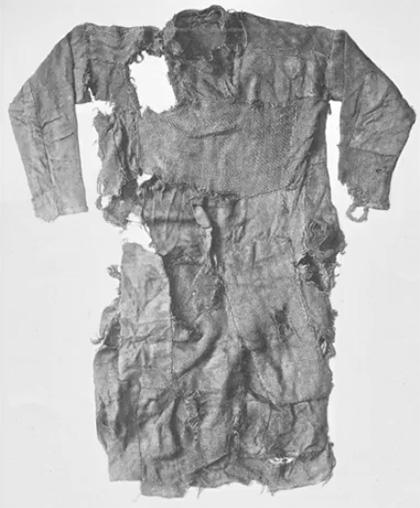
Ötzi, the Iceman, 5,300 years ago. Scientists have studied the famous mummy’s clothes for the first time and found they were made from a variety of 5 different animals. His hat was produced from two wild species: brown bear and the roe deer respectively. The mummy was discovered in the Italian Ötztal Alps in 1991 and two decades of analysis have provided insights into his ancestry, diet, tools, lifestyle, health, and attire.
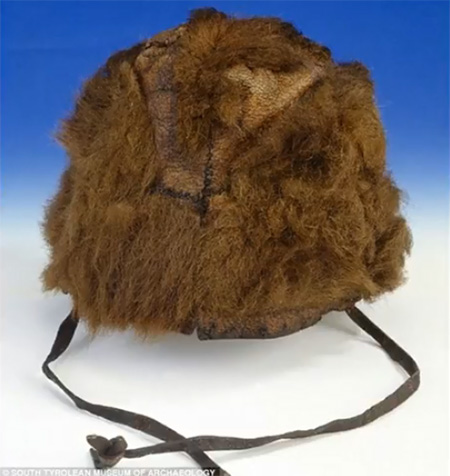
Read also:
Medieval attire of the Bocksten Man, 14th-century Swedish mummy from a bog
Taizhou mummy dated Ming Dynasty shows us accurate 700-year-old Chinese clothing
Mongolian millennium-old mummy in Adidas-style shoes. Whaaat?!
How ancient Otzi the IceMan made his 5000 years old style backpack
Viking lost mitten from Lendbreen is one of a kind find. How was it made?
(c)


